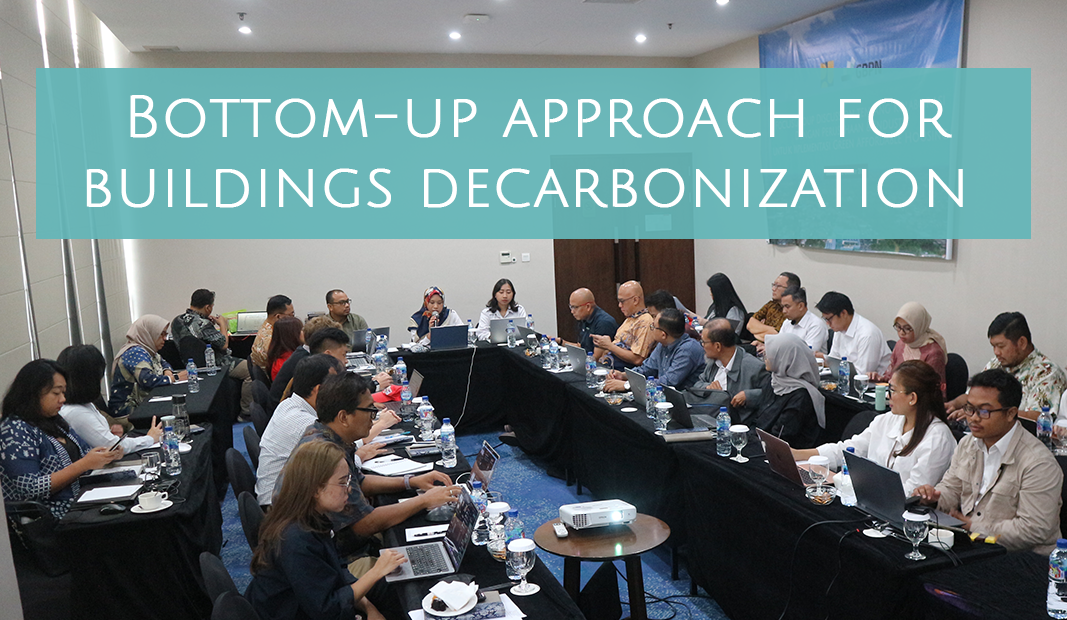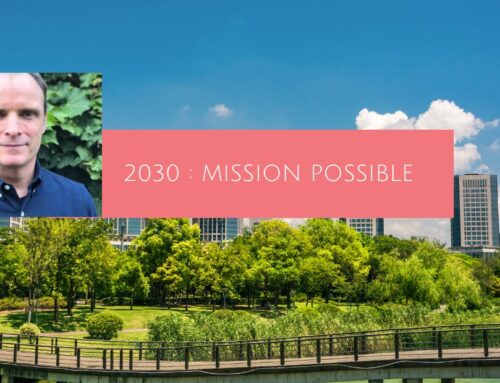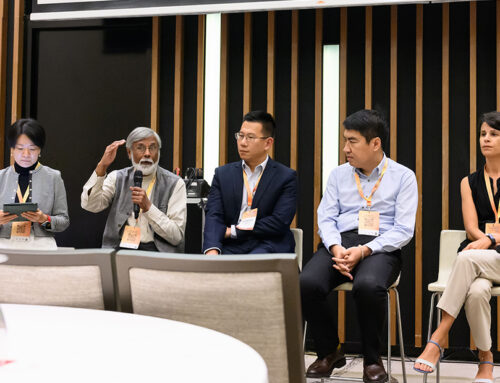by Dr Peter Graham
The conversation surrounding built environment decarbonization often pits top-down approaches against bottom-up strategies. The argument is that bottom-up strategies do not scale, while top-down strategies are less nimble and lack local buy-in. This is a myth that we continue to debunk with our work everyday. When local knowledge and expertise are engaged by the right methodologies, they become powerful levers for transforming the built environment.
Our bottom-up strategy relies on local experts with an in-depth analysis and understanding of the status-quo and the building regulatory framework. The main goal is to foster vertical-horizontal coordination – for example between national and sub-national government departments, and inter-government departments – to avoid ineffective overlaps and provide opportunities for up-scaling interventions and actions.
We see from time and again, international projects that have a fantastic logframe but don’t have any insight from the local perspective in the design. And so they end up being imposed on local stakeholders rather than being co-created with them. At GBPN, we trust the local insight. But a bottom-up approach is not just about understanding the local regulatory framework. It’s about understanding the technical environment, the market insights, and understanding the local culture. It’s about empowering deep-rooted local knowledge. We know it works because we have successfully implemented this strategy in Indonesia, India and now in Kenya.
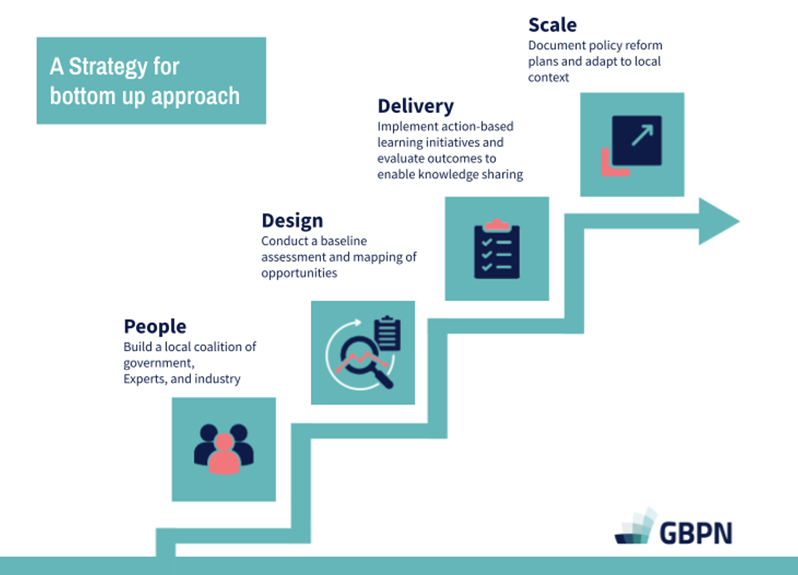
Our success story in Indonesia
In Indonesia, we brought together city governments, energy experts, and national stakeholders to pilot energy efficiency roadmaps in fast-growing urban centres. GBPN worked with local expert partners and organizations to develop the green building policy for the city of Samarinda, and draft implementation procedures for Bali’s clean energy policy. GBPN partnerships supported the first national green building roadmap endorsed by three key ministries (Ministry of Public Works and Housing, the Ministry of Energy and Mineral Resources and the Ministry of Home Affairs), two subnational roadmaps on energy efficient buildings, and a national building energy model informed by data from 10 cities.
Together with its partners, GBPN has taken the lead on creating GBPN Policy Hub, a platform to bring these key stakeholders together. Our programmes in Indonesia, with the Ministry of Energy and Mineral Resources, the Ministry of Finance, the governments of Samarinda and Bali, are all designed to support the agencies to take the lead in creating policy reform changes, combining global best practices with local expertise
How it worked for the Indian context
In India, we are working together with local partners to support the government and industry to meet CO2 emissions goals, as they manage an intensive construction boom and rapid urbanization. With the recent notification of the Energy Conservation Amendment Bill in the Indian Parliament, the country is set for positive change. The bill is rightly expanding the coverage of energy efficiency to include large residential buildings. In anticipation of the upcoming need, GBPN is working with our local partners to develop guidelines that will help industry and policymakers to implement improvements at the design stage that will deliver increased thermal comfort and renewable energy to achieve a net-zero paradigm.
We have also partnered with local organisations to deliver sustainable design working in harmony with resident needs and lifestyles. The Healthy Affordable Buildings project has worked on the ground exploring better ways to design and build healthy affordable sustainable homes. The project findings will support improved standards in indoor and outdoor environmental quality, especially for poorer communities, and potentially be included in national building codes.
GBPN continues to partner with local experts in India, to ensure that solutions developed would be practical, easy to implement and affordable – removing many of the existing barriers to delivering sustainable building practices.
So how did we do it?
The key to GBPN’s effectiveness is understanding our stakeholder’s needs and tailoring our solutions with them. In Indonesia, GBPN team members describe the process as knowing the right ingredients to make a dish successful.
“Think about it as the sauce in Rendang,” (a signature Indonesian curry), says Farida Lasida, Country Manager, GBPN Indonesia.
“When you add chilli to the sauce, you need to know the right type of chilli that takes the dish from good to best. That is the secret of the sauce, and you need to be aware of what works.
“Our experts know what would work best for the local context, and how to scale it to other cities and provinces in the country.”
Hitesh Vaidya, GBPN Board Member, agrees. “It’s like the Thali (a meal served in India featuring multiple dishes). Different states in India have different versions of the thali, based on local climate, produce and cooking methods. You need to understand what dish the customer wants and serve them that.
“When we work with the government we need to serve them what they need to ensure policy success.”
How Kenya is implementing it
In Kenya, the State Department of Public Works has invited GBPN to commence development of a National decarbonization roadmap for the buildings sector as part of the global Buildings Breakthrough Agenda. The project works through working groups with key stakeholders from all groups – public, private, industry, social and non-profits.
The roadmap will be sector-wide validated and collaboratively developed with local experts playing a key part in its development. The project is anchored on three core pillars – Inclusive Stakeholder Engagement, Evidence-Driven Prioritization and Locally-led Innovation.
We are working on building a strong network of local experts in Kenya and other African countries. The network will help us scale the success in Kenya to other countries, with solutions that are modified for each country’s local context.
Does that mean we don’t engage with top-down policies?
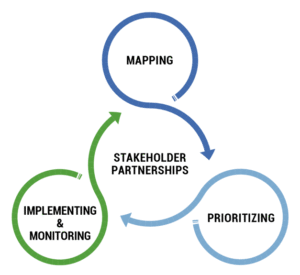
Image courtesy: GlobalABC – A guide for incorporating building actions in NDCs
Of course we do. Building sector policies are mostly created at the central level, and disseminated to the regions for implementation. But we often see a disconnect between the policy and its implementation. GBPN engages with policymakers through local experts and industry experts to untangle the complexities to make them implementable. When we work with policymakers through local experts, we are able to provide practical solutions and technical advisory support that are tailored to the country and can be then disseminated to states or provinces for better implementation.
With our bottom-up approach, GBPN experts are now strongly placed as the “honest brokers”, able to facilitate collaborative working relationships and effective delivery of practical policy solutions tailor-made for each country.
Share This Story, Choose Your Platform!
Stay in touch with how we’re transforming the buildings sector
GBPN runs innovative building policy reform programs in key regions around the world that aim to tackle the climate emergency by decarbonising the buildings sector. Stay up to date with our newsletter.
Stay in touch with how we’re transforming the buildings sector
GBPN runs innovative building policy reform programs in key regions around the world that aim to tackle the climate emergency by decarbonising the buildings sector. Stay up to date with our newsletter.

